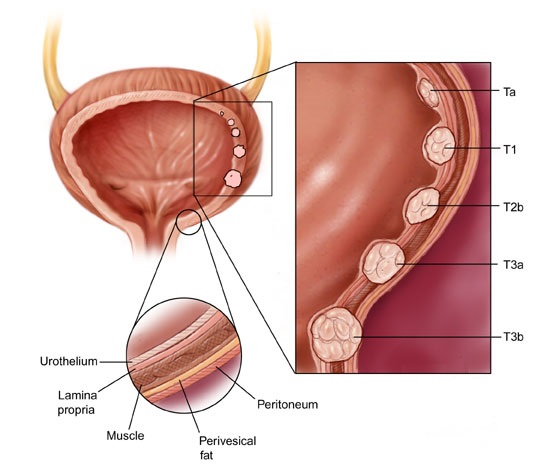Bladder Tumors
—Specialisation
Bladder tumor, when it is in an intensive form becomes bladder cancer. Cancer in the bladder or in any organ of the body is caused from the abnormal growth of the tissue, which is also called as a tumor. The tumor is developed in lining of the bladder. In some of the cases, the small tumor gets spread towards the muscles placed at the surrounding areas.
Bladder tumor or bladder cancer is found more in the men, rather than the women. It could be because, the men smoke more and probability of the men working in the manufacturing industry is more.

Symptoms
The usual symptom of the bladder tumor or the bladder cancer is the blood in urine. The patient experiences no pain, while it happens. So, one should visit the doctor, immediately after this symptom is experienced.Diagnosis
The basic diagnosis done for the bladder tumor or bladder cancer is the cystoscopy. In this procedure, flexible tube that consists of the camera and also certain important instruments is used. It is inserted inside the bladder, though the urethra. This diagnostic method is called gold standard for diagnosing for bladder cancer. Home diagnostic method is also possible, through NMP22. This is a non-invasive diagnosis and the test is analysed through H-related protein, which is a human complement factor. There is also another non-invasive method of diagnosis called CertNDx. Still the other ways of diagnosis are fluorescence cystoscopy that is guided through Cysview or Hexvlx. These tests are performed through fluorescence cystoscopy guidance and are also called photodynamic diagnosis or blue light cystoscopy. The procedure detects the cancer in the bladder and then rate early tumor recurrence rate can be reduced, when compared to the only white light cystoscopy tests. Cysview, especially reduces the recurrence of the cancer in the bladder and detects more cancer.Types of Bladder Cancer
Cancer that starts in the bladder is classified into many types.
Transition cell or urothelial carcinoma, which can be either invasive or non-invasive bladder cancers
Transitional cell carcinoma is also divided into two other types like papillary carcinoma or flat carcinomas
Squamous cell carcinoma
Adenocarcinoma
Small cell carcinoma
Sarcoma
